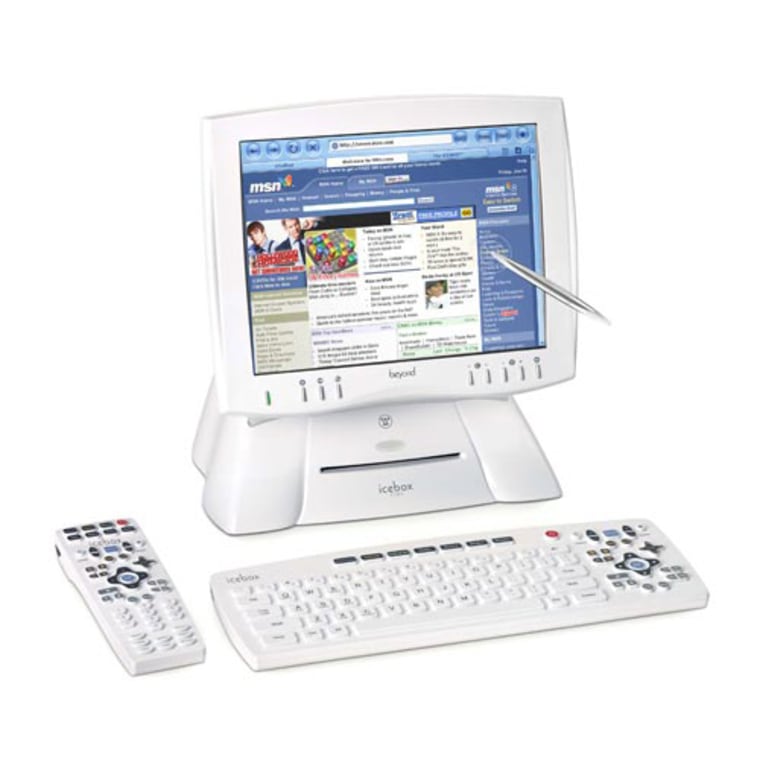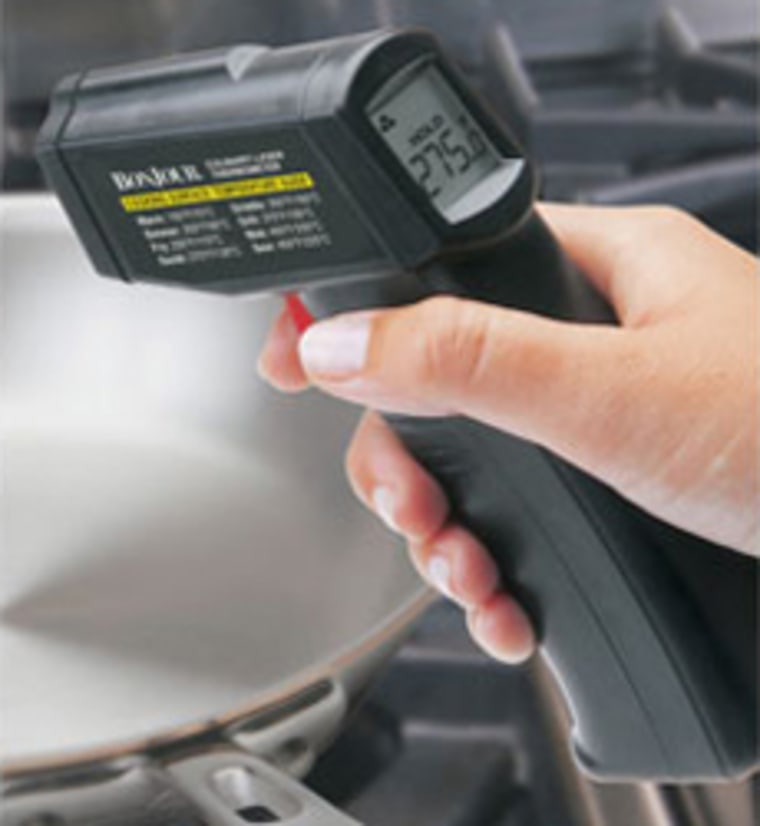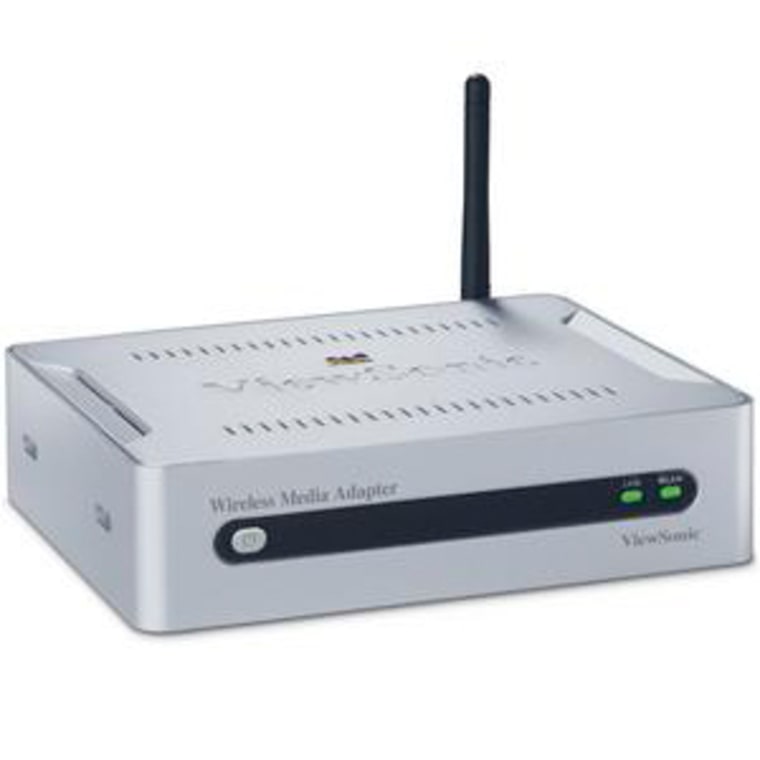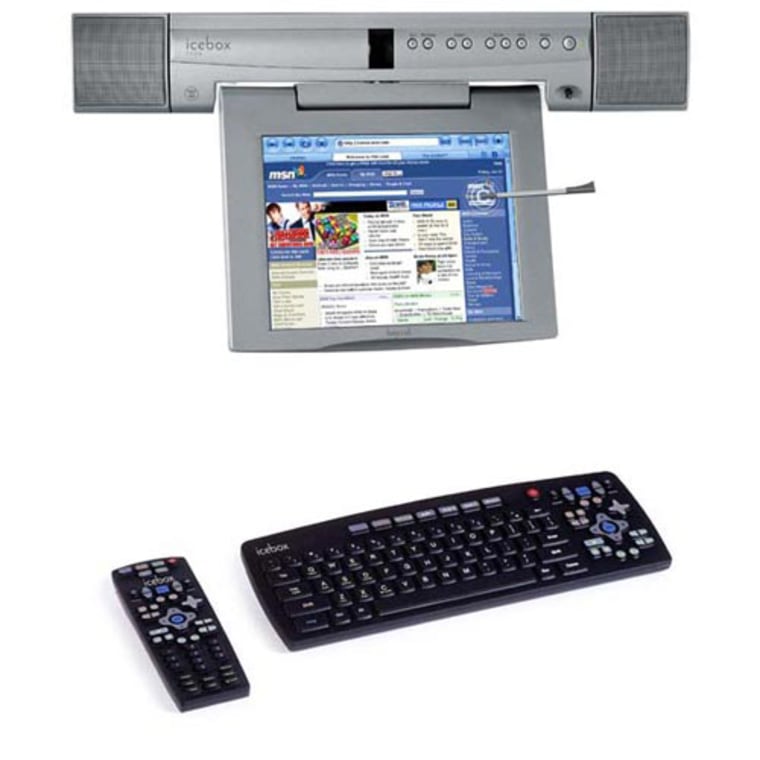The idea of “home” began as a single large room in which all daily activities took place. Over the centuries, homes gradually divided into an ever-increasing number of smaller rooms with specialized functions. The specialization continues today — home gyms, media rooms, etc. — with one exception: the kitchen.
In many homes the kitchen now is expanding to include more space for family activities and entertainment. In the South, the result is “the great room,” but whatever it’s called, it reflects a basic truth: Everybody likes to hang out around the kitchen.
Thus the kitchen means not only food storage and preparation, but entertainment as well.
Entertainment specifically for the cook has arrived in the form of small screen LCD televisions that mount under cabinets so as not to take up counter space. Sony makes a very sleek silver version with a 7” fold-down screen plus radio and CD player for around $330; it includes a built-in kitchen timer and a magnetic remote for easy storage on the refrigerator door. Audiovox sells its VE705 undercounter LCD TV-radio with the same sized screen but a tad less style for $200. And should you have counter space to spare, take a look at Sharp’s 13” LC13AV4U, a very slim LCD set with superb performance for a bit over $300.
Past pure entertainment, the most concerted effort to date to digitize the kitchen is from Salton (the company behind such brands as Toastmaster and Westinghouse). Their Beyond line of products is built around the $1299 iCEBOX, a kitchen computer/entertainment center (complete with washable keyboard) which is also available in a slim under-cabinet version LCD TV and DVD player for $1999.

The iCEBOX is complemented by a $165 microwave, a breadmaker at $150 and a $90 coffeemaker. All of the appliances can stand alone but can also be networked together for home automation purposes. Both the microwave and breadmaker can read thousands of barcodes on packages to automatically set themselves for proper cooking. (If the appliances are networked, they go online to download barcodes for new products as well.)
It’s a well-considered approach to adding value to the kitchen as opposed to simple gimmickry; it will be interesting to see how the market responds.
But there are also smaller bits of advanced technology that should find a comfortable place in the kitchen.

For starters, take a look at this high-tech thermometer: the BonJour Culinary Laser Thermometer, a $100 pistol-grip unit that uses infrared to measure the temperature of any cooking surface (without touching it) from 0 to 932 degrees. Pros use costlier versions of these thermometers to make sure the grill or skillet is at just the right temperature for perfect results. Another handy thermometer is the Sure Grip Instant Read Fork from Acurite; spear anything with this stainless steel fork and the round digital readout instantly displays the temperature.
On the beverage side, in lieu of a sommelier, try the Excalibur Wine Master, a pocket-sized $30 wonder that contains the ratings of 10,000 wines from Wine Enthusiast magazine, along with software that lets you pair wines with specific foods. Should your chosen wine need temperature adjustment, you can use the ThermoKool MR-158 Digital Wine Cooler & Warmer, which for about $80 will keep a bottle at any temperature from 37 degrees to 122 degrees. While it’s the rare wine that needs to be served at 122 degrees, this way you’re prepared for anything.
Two other gadgets round out the list for the serious cook in need of electronic accessories. The first wins on looks: the exceedingly cool $60 Salter 1004 digital scale, a sleek, low-slung stainless steel and glass platform that weighs up to eleven pounds in increments as small as 1/8 ounce. The other is for kitchens with, uh, rodent issues: the Sharper Image Mouse Mover at $50 is a small plug-in module said to emit ultrasonic sound that will keep Mickey and all his relatives at bay, without bothering pets or humans (although the directions also suggest that you “remove food scraps” as well).
One place, of course, where Mickey Mouse and his friends are welcome is on the other side of the kitchen counter, where the family gathers around the media center. Previous installments of Digital Life have covered big-screen televisions and surround-sound as well as video projectors and videogames. The next step in home entertainment is networking your audio and video systems so that the cool stuff that resides on hard drives in the home office or the kids’ room can also be viewed and heard where the family gathers.
In the old days, when a home had networked audio or video, that meant that wires ran from the home entertainment center to all the other rooms where you wanted music or video. Now, however, two advances have fundamentally changed the game: wireless networking has arrived via Wi-Fi, and increasingly all our sources of entertainment are digital files.
Thus arrives the “home media hub” — in simplest terms, a Wi-Fi enabled box that sits with your home entertainment center. The box pulls audio, video and photographs off all the computers (or similar home media hubs) around the house and then converts them into audio and video that can play through your television and sound system.
That may sound simple, but it’s still early-adopter country. For starters, there is a veritable alphabet soup of file types for digital audio and video — MPEG, DivX, MP3, AAC, WMA, to name only a few — and your home media hub needs to be able to translate all the ones you use. And Wi-Fi may not always have the bandwidth for high-quality video. In addition, some digital rights management systems may not easily let you play music from one computer on another device. Some home media hubs handle just audio; a few require a wired, rather than wireless network. Those are just a few of the issues you need to think through if you’re jumping into this area.

Typical hardware choices from the computer world range from the media extenders made for Microsoft’s Xbox (which effectively turn the game machine into a media hub) to networking company D-Link’s MediaLounge DSM-320 Wireless Media Player. Apple offers its Airport Express that facilitates audio sharing, and its new iMac G5 comes with a remote control and is clearly aimed at the home entertainment hub market. Monitor-maker Viewsonic has the $350 WMA100 Wireless Media Adapter, and smaller companies like Hauppauge, Sonos and Prismiq also have offerings, with new entrants regularly arriving.
On the consumer electronics side, both Sony and Philips have entered the fray. Sony’s $200 RoomLink Network Media Receiver works with their VAIO line of PCs. Philips offers the Streamium series of “Wi-Fi enabled multimedia receivers” in the $150 - $400 range. And TiVo offers "Home Media” features on its Series2 models that let the boxes transfer audio, video and photographs between other TiVo boxes as well as home computers.
If all that choice sounds a bit dizzying, it is. Getting computers to play nice with consumer electronics is not easy, but those who manage it usually love the results. As more manufacturers pile on — look for a plethora of new products at this January’s Consumer Electronics Show — perhaps the process will become a bit more plug and play. But for now, we’re stuck with that old joke about the personal computer industry: it’s a business that believes standards are important. After all, they have so many of them.
